Notes
David Frum Accuses NYT and Reuters of Staging Gaza Hospital Photos (GRAPHIC)
photo #1
photo #2
Defending Israel with the objectivity and intensity of the Bush speech writer he once was, David Frum, the Senior Editor at the Atlantic, alleged to his 100k Twitter followers on Thursday (not once, but eight times) that the NYT, Reuters (and AP, apparently in collusion, too) had staged a photo in a Gaza hospital.
A friend asks: why does Hamas use faked atrocity photos http://t.co/8h7WfLYYFo when it cd photo real casualties?
— David Frum (@davidfrum) July 24, 2014
Faked photo leads NYT story today http://t.co/x08PRt4epG — David Frum (@davidfrum) July 24, 2014
In the NYT version of the faked photo, the man does not yet have blood on his arms. Reuters was given its version later, I suppose
— David Frum (@davidfrum) July 24, 2014
Here are the links to the other five tweets, by the way, including the fourth one which Frum tweeted at the NY Times Public Editor: 1, 2, 3, 4, 5.
Frum’s allegations were based on a post by an idiosyncratic blogger named Thomas Wictor who has been lobbing similar allegations of visual conspiracy. This is the Wictor post Frum was so impressed by.
The charges in question come from Wictor’s interpretation of two photos taken on July 23rd at Nasser Hospital in Southern Gaza. The photos feature a pair of brothers who, according to reporting, arrived at the hospital with their father after an airstrike destroyed the family’s house in Khan Younis. One brother in particularly was soaked in his father’s blood.
Comparing the Reuters portrait above (#2) with an AP photo from the hospital someone randomly sent to him (#6 below), Wictor noticed that the brothers in the portrait no longer had blood on their hands and face and concluded that there must be some Palestinian, as well as media trickery going on. Rather than submitting Wictor’s accusation of subterfuge to further review however, Frum not only took the accusations on faith but added the NY Times to the supposed conspiracy because the Times featured a similar portrait (#1) by one of its own photographers taken almost simultaneously to the Reuters photo (#2).
I’ll spare you Wictor’s theory about how the brothers must have complimented their grief with the tactic of covering themselves in fake blood. Given that Frum’s eight tweets had the potential reach of 800,000 pairs of eyeballs, not to mention the retweets, follow up links and fomentation it spawned, what is worth the effort is taking these allegations — similar to others being made more out of passion than logic during this horrible last month in the Middle East — and exposing them for how misguided they are. Certainly, these organizations have better uses of their time right now — including, keeping their photographers alive while adhering to ethical standards — without having to contend with libelous charges being leveled on impulse.
So, where should I start on Wictor’s conspiratorial analysis and his conclusion that these brothers must have posed first for the “clean handed” portraits, then applied fake blood to their hands for the photos in the corridor?
Should I start with Wictor’s inability to find, let alone sequence and read the relevant news photos in a logical timeline, instead basing his assumption of foul play (perpetrated spontaneously, by four different photographers and three different news organizations) in a scene he sees coming first that logically happens last? For you to appreciate what I’m talking about, let me offer you four published photos in the most likely chronology, photos #3 through #6 likely taking place before the New York Times and Reuters photos (#1 and 2) leading off this post. We have:
The bloody son stepping out of the back of the ambulance, the attendees reaching to help him while also pulling out his father:
photo #3
Then we have three photos of the brothers, now inside the hospital (via AP). This photo looks to involve the father’s body being taken in, and to the right, the one brother tracking it.
photo #4
This next scene seems to involve the more stricken brother engaging or beseeching either an orderly or a doctor upon the father’s body being removed.
photo #5
And then, the father gone and the hospital staff no longer engaged with them, the bearded brother appears to collapses in grief:
photo #6
Finally then, following the logic, comes the Reuters and the NY Times portraits (#1 and 2) of the two brothers in a more open space and post-triage by virtue of the decreased institutional activity, immediate urgency as well as the presence of the chair. Now alone in their grief (I imagine, the permanence of the loss setting in), yes, their hands and faces are now relatively clean.
For myself, the narrative would also accommodate some break in time between the admitting process and the two brothers, now alone, encountering the shock wave of separation. It makes sense to me, too, that after the father was gone, the men would want to at least wash his blood off their faces and hands. (When I first saw #5, I was actually wondering if that was a sink at the end of the hall where the orderly, if that’s his face in a mirror, might be washing up.) In any case, I contacted Reuters for a statement and they wrote back:
We’ve confirmed with our photographer that the man in the photo washed his hands and face after his father’s body was admitted to the hospital.
So, where else to go with Mr. Wictor’s analysis and Mr. Frum’s endorsement of it? The hair, perhaps? Wictor writes:
So, we have competing information from the Associated Press and Reuters. In the Reuters photo (#2), the man’s face and hands are totally clean. Notice his hair; it’s dry and fluffy. In the photo that Ms. Farzana Arab sent me (he’s referring to photo #6 in the corridor) , the man’s hair is matted down with blood.
To my eyes, the man’s hair in photo #4 doesn’t look wet or matted, but I could understand Wictor seeing it that way based on the bright flash. Otherwise, the hair looks more consistent throughout.
What about the fact he saw conspiracy in some caption differences? Looking at #6 in a Facebook clip that was sent to him, he writes:
According to the caption, the bloody man was injured in an Israeli airstrike in Khan Younis, in the southern part of the Gaza strip.
Comparing that to the Reuters caption from #2, he writes:
“The same two men, but now the crying man is covered with his father’s blood, spilled during an Israeli artillery strike.” (Bold indicates his italics.)
Is it worth asking any photo editor, in such a chaotic situation as this, if mistaking the blood-soaked son for an injured man seems malicious or not?
Then, what about the glove theory? As Wictor writes:
In (photo #2), you can see that he wore latex gloves. The blood on his arms stops at his wrists in perfectly straight lines.
Latex, is that right?
And then, there’s Wictor’s emotional evidence:
And no tears in either image (between #2 and #6). In the photo on the right (photo #2), he looks like he’s singing opera, doesn’t he?
As a clinician myself, I can’t say that emotional trauma has any one way of presenting, although shock and extreme grief, if excruciating, can often be absent tears. On the other hand, if there is a more obvious set of behavior evident in all this, it’s Frum’s eagerness to impugn the Palestinians, these media organizations and photojournalism on top of Wictor’s ineptitude.
UPDATE 1: 9:50 am PST: Sergey Ponomarev — the photographer who took the photo leading this post for the NY Times — was interviewed this morning on the NY Times Lens Blog in a post titled: Photographing on the Ground in Gaza. Part of the answer to the fourth question, asking Ponomarev to describe the scene at the hospital in Rafah, reads as follows:
In one ambulance there was a heavily injured older man and two younger men, and one of them was covered with blood and really upset. He fell on his knees, calling on Allah and gesturing.
There was a huge crowd around those people arriving, including guards and medical personnel. They went to the operating room and I followed them. The same upset man was yelling and gesturing, and we were all kicked out from the operating room so as not to distract the doctors.
Then he was gesturing and crying in the hospital corridor. I believe he was the son of the older man who was injured. So I photographed other people and then came back after the other media left him alone. I saw his brother take him to a nearby room and he must’ve washed him off because afterward there was no blood on his face and his hands were clean. He was sitting on the chair and seemed calmer, and that’s when I took the photo.
UPDATE 2: 6:28 pm: Via Ali Gharib at Lobelog (full article: “David Frum’s Sources“):
(T)he (New York) Times’s international photo editor David Furst was unequivocal that the paper stood by Ponomarev’s shots. “We have investigated the allegations being made against photographer Sergey Ponomarev,” Furst told me, “and have definitively concluded that they have no foundation and are absolutely without merit.”
UPDATE 3 – 2pm PST, 7/30/15 – David Frum’s issues apology post/Bag response.
David Frum published this apology today in response to our critique of his Gaza hospital “fake photo” allegations. (As reflected by the article’s comments, widespread twitter feedback, and the ratio of apology-to-explanation, it’s not exactly settling.)
Most specifically, though, my concern is that the post apologizes to Sergey Ponomarev who shoots for the New York Times (and who, of the group of photo-journalists, is the only one with a Western profile) but doesn’t mention the other four photographers, specifically Ibraheem Abu Mustafa of Reuters; Abed Rahim Khatib of NurPhoto/REX, whose two photographs from the scene were published by the AP; and Hatem Ali of AP. Most significantly, the apology didn’t acknowledge or extend an apology to the two Palestinian brothers whose integrity was impugned, captured before the eyes of the world in such intense grief.
I wonder also why an “apology” was issued rather than a correction, which seems the most appropriate (the Twitter platform notwithstanding). For the Senior Editor to offer the former rather than the latter in The Atlantic’s space suggests that Frum’s behavior in the eight tweets Bag identified — as opposed to the three he acknowledged — was more a matter of bad form or simple oversight in the exercise of personal opinion rather than the execution of errors according to the standards of journalistic practice. If a correction was issued (and insisted on by The Atlantic), the measure here would have been to solely and comprehensively delineate and acknowledge the professional errors, then walk away.
Finally, and this also relates to the lack of accounting in strict journalistic terms, Frum omitted any mention of his failure to vet a thoroughly unreliable source. Rather, he blurred his role in this tweet referring to Mr. Wictor as his friend. Given that Mr. Wictor, as painfully elaborated in another post on this matter, is not just struggling with mental illness but acknowledges as much in his bio, he deserved better too.
(photo 1: Ibraheem Abu Mustafa/Reuters caption: A Palestinian man, in clothes stained with the blood of his father, who medics said was killed by Israeli shelling, mourns at a hospital in Khan Younis in the southern Gaza Strip July 23, 2014.photo 2: Sergey Ponomarev for The New York Times caption: Two brothers on Wednesday grieving their father, killed in shelling in Gaza. Polls find Israel is losing backing in many countries, though Americans are supportive.. photo 3: Ibraheem Abu Mustafa/Reuters caption: A Palestinian man (C), in clothes stained with the blood of his father, who medics said was killed by Israeli shelling, mourns as he disembarks an ambulance transporting his father’s body, at a hospital in Khan Younis in the southern Gaza Strip. photo 4: Abed Rahim Khatib/NurPhoto/REX via AP Images caption: An injured man arrives at Nasser hospital, following an Israeli airstrike at their family house in Khan Younis in the southern Gaza Strip Israeli – Gaza conflict, Gaza, Palestinian Territories – 23 Jul 2014 Israeli troops battled Hamas militants on Wednesday near a southern Gaza Strip town as the top U.S. diplomat reported progress in efforts to broker a truce in a war that has so far killed hundreds of Palestinians and tens of Israelis. photo 5: Abed Rahim Khatib/NurPhoto/REX via AP Images caption: A man comforts an injured relative at Nasser hospital, following an Israeli airstrike at their family house in Khan Younis in the southern Gaza Strip Israeli – Gaza conflict, Gaza, Palestinian Territories – 23 Jul 2014 Israeli troops battled Hamas militants on Wednesday near a southern Gaza Strip town as the top U.S. diplomat reported progress in efforts to broker a truce in a war that has so far killed hundreds of Palestinians and tens of Israelis. photo 6: Hatem Ali/AP Images caption: A Palestinian man comforts his injured relative at Nasser hospital, following an Israeli airstrike at their family house in Khan Younis in the southern Gaza Strip on Wednesday, July 23, 2014. Israeli troops battled Hamas militants on Wednesday near a southern Gaza Strip town as the top U.S. diplomat reported progress in efforts to broker a truce in a war that has so far killed hundreds of Palestinians and tens of Israelis).
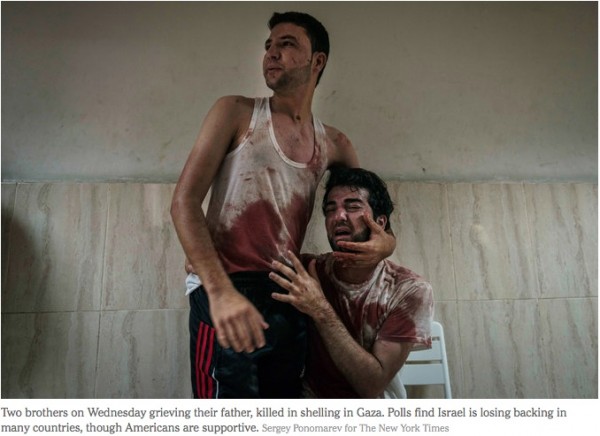
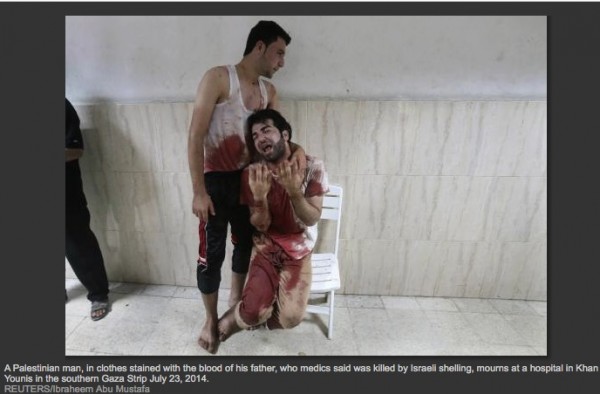
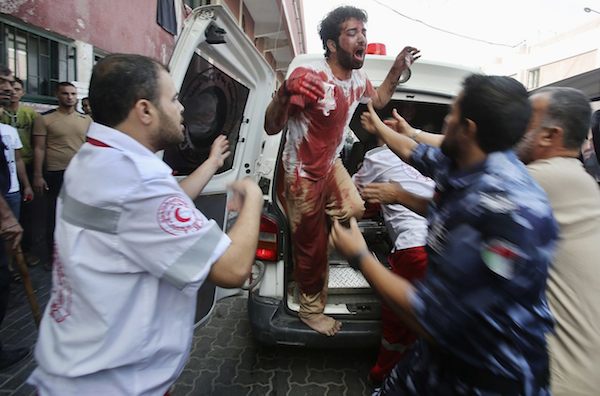
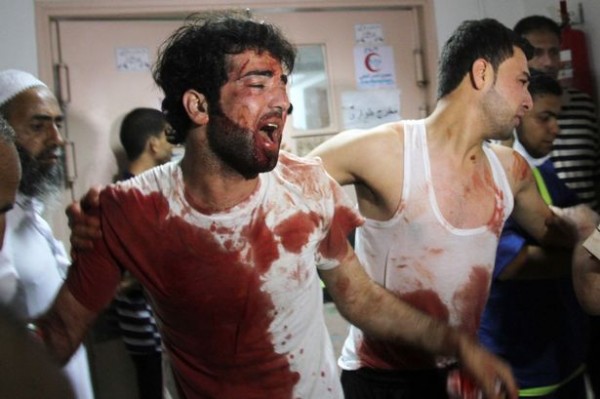
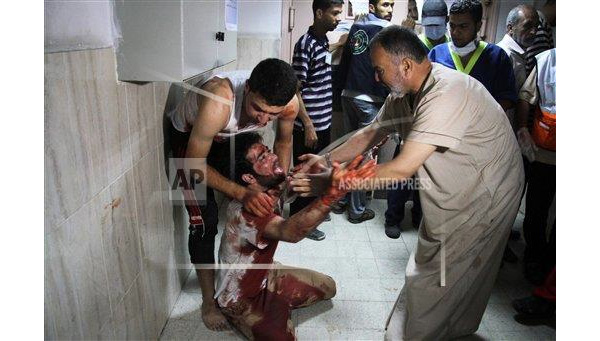
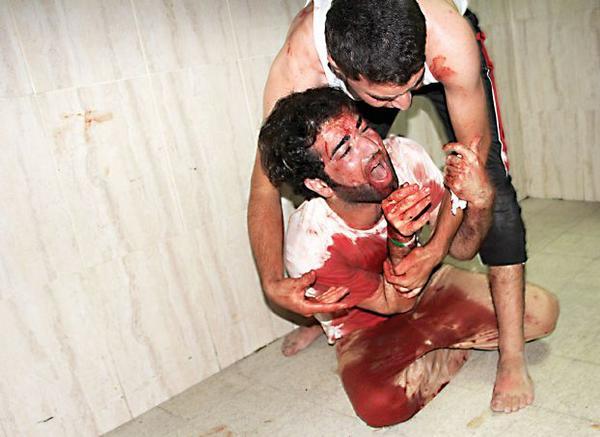
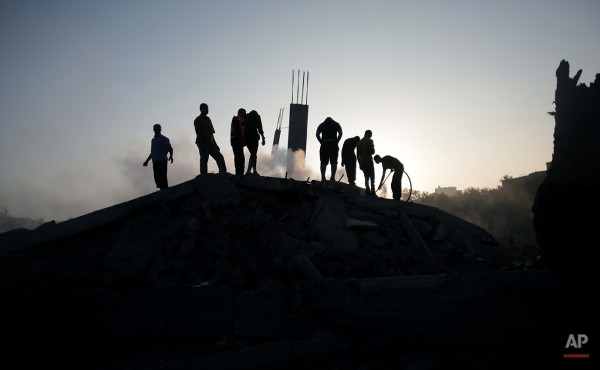
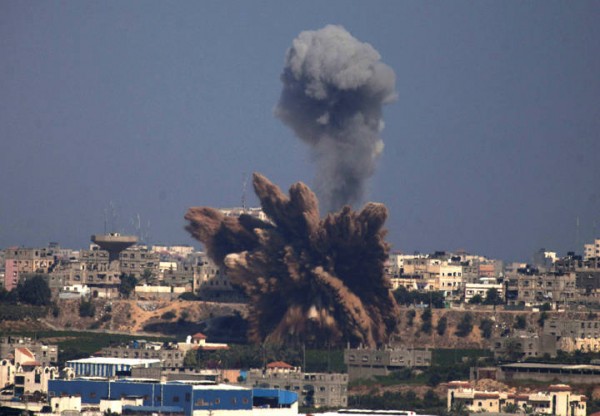
Reactions
Comments Powered by Disqus